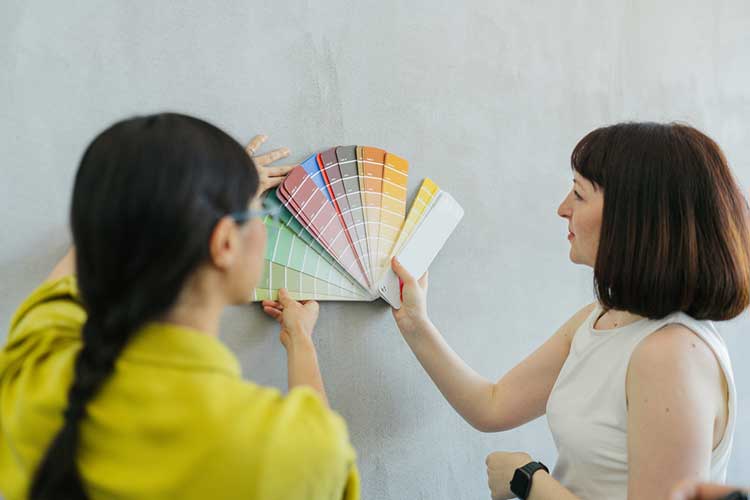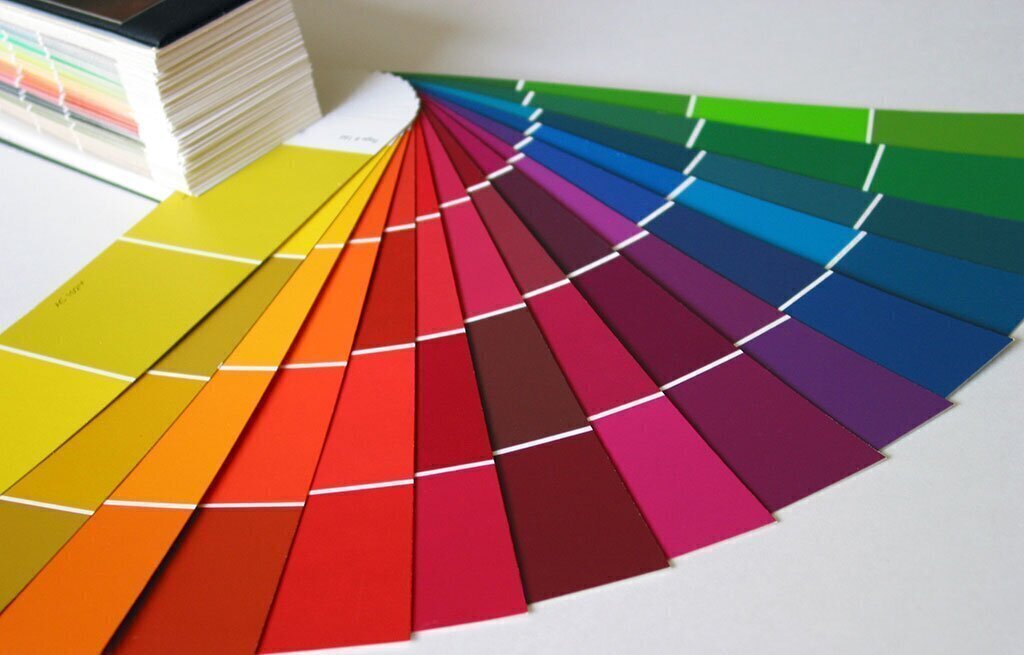How to Pick Paint
Last updated May 2025

Interior and exterior paints come in thousands of shades and a range of finishes, from flat to high gloss. Here’s what to know before you purchase a single can.
Interior vs. Exterior Paint
Interior and exterior paints are not interchangeable; they’re formulated differently. Generally, interior paints dry harder than exterior paints, which makes them less flexible but more scrubbable. Outside, flexibility helps paint withstand extremes of weather. Also, additives used mostly in exterior paint improve resistance to mold formation and fading in sunlight.
Repainting a surface covered in old oil-based paint requires special prep; otherwise, the new latex paint will flake and lift, sometimes within hours. Try a test-patch application of oil-based primer, let it dry at least 24 hours, then test a finish coat of paint.
Not sure what’s on your wall? Clean and dry a sample spot, then rub the area with a swab soaked in denatured alcohol. If the paint comes off, it’s water-based and you can repaint it without applying primer; if it doesn’t, it’s oil-based and you have more work to do.
Finishes
Flatter finishes conceal more defects, while glossier finishes highlight them. But flat finishes tend to look best on walls and ceilings, while glossier finishes look best on woodwork and are easier to clean. It sounds simple, but manufacturers use a bewildering array of words to describe the range. Although the best way to decide is to test a sample, here’s a rundown of the differences:
- Flat or matte—reflects the least amount of light and gives a rich finish to deep colors.
- Satin, silk, eggshell, or low-luster—has some shine and usually means the paint is more washable than flat/matte.
- Semi-gloss—sometimes used on walls in kitchens and baths, but more often on woodwork and trim.
- Gloss or high-gloss—highly reflective, can be glaring on trim next to a flat wall paint and nearly blinding in a brightly lit kitchen.
Coverage
A figure for the square footage covered per gallon appears on the paint can, but it’s generally overly optimistic. Multiple calculators on the web can help you figure out how much to buy. In general, you’ll need one gallon per 300 to 400 square feet of surface.
Paint Ratings
Consumer Reports regularly conducts accelerated aging and exposure tests on paints from many manufacturers in its unbiased ratings. Some of its top-rated products performed better than more expensive paints and cost only $35 to $40 per gallon.

Color
You can pick up samples from stores, and online you’ll find design programs (many from paint manufacturers) with palettes displaying millions of possible combinations. The trick is to translate the color you have in mind to the paint that finally appears on the wall. Swatches can help, so long as you try them in different light on different walls. But for large projects that require several gallons, painting a small test area or purchasing a stick-on sample (it’s like a supersized paint Post-it) is the best option.
Visit any paint store and you’ll find a rainbow of colors—dark-as-the-Aegean navy, pale pink that seems inspired by morning mist (or maybe ballet shoes), even bold black. Most paint manufacturers produce hues by the thousands, not dozens (Benjamin Moore alone sells more than 3,500 shades). So when you’re redoing a room—or spiffing up the exterior of your house—how do you choose?
Devise a color scheme. Before you shop, come up with a color scheme for the room or project you’re tackling. If you’re repainting to set off that new floral sofa, riff on it by drawing out one shade from the print. A whole-house coating can play off of trees in your front yard or be inspired by historic hues. A color wheel—either a small one you pick up at a paint or art store, or an online one—can help you with this, too, since it decodes what shades play nicely together.
Take it home. Don’t choose your paint color in the store. Take home samples (the bigger the better), and look at them in the space or place you’ll be using the paint. These days many companies offer tiny pots of paint or laptop-sized stick-on swatches, too.
Slap up a little. That weensy strip of shades from the paint store isn’t big enough to help you find the ideal color; you’re going to need to spring for a pint of paint or a larger color card (now available from manufacturers including Benjamin Moore, Farrow & Ball, Sherwin-Williams, and most other major players) in each color you’re pondering. Paint a small area of wall—say two feet by two feet—in each of the colors. Or apply different shades of paint to pieces of poster board and pin them to the wall. Then keep an eye on how that kelly green or moody mauve looks at different times of the day, in different lights, and indoors, with your sofa/chair/collection of Rembrandt prints.
Go for some flow. When painting interiors, many wannabe HGTV stars go rainbow wild, making one room peach, an adjoining room red, etc. Yes, color is a highly subjective choice—one person’s dream disco-den gold is another person’s too-bright nightmare. But if you tie in some colors or shades throughout your home, you’ll create a more cohesive, more soothing look. Bonus: Painting adjoining rooms in similar or coordinating shades can make your whole pad look bigger.
Call in a pro. Many paint stores employ color consultants who, for a small fee (usually around $150), will come to your house and help you choose paint. Interior designers also often offer this service. Yep, you might balk at paying someone to make your choices, but these experts—who usually know a lot about color theory and which paints work best in dark or light spaces—can winnow in on your style and needs quickly.


